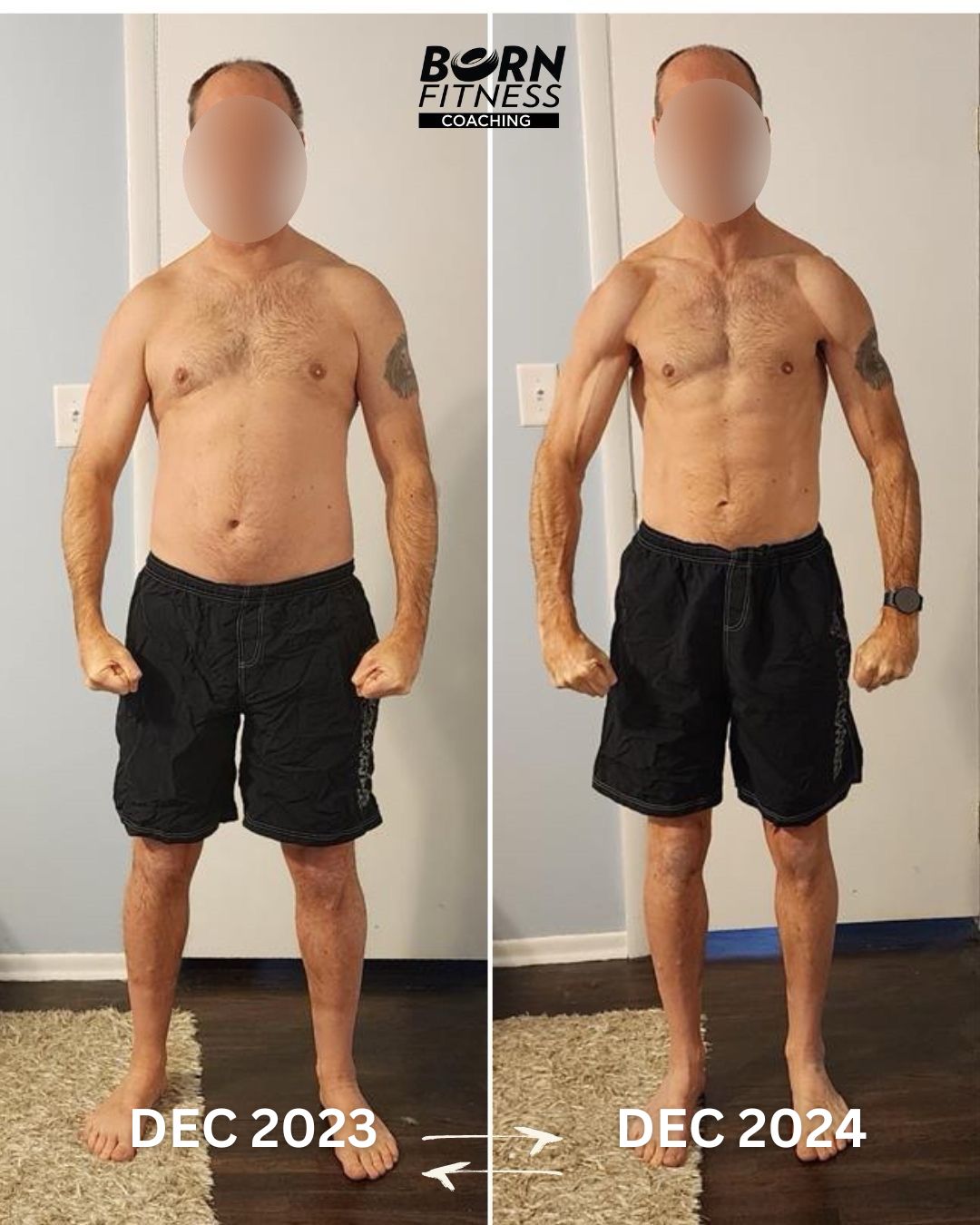When Anthony, a 53-year-old, told us he wanted to look like Jason Statham, we gave him a plan he didn’t expect:
Three workouts per week.
A moderate calorie deficit.
No complicated macros—just protein and total calories.
Anthony was skeptical. His past weight-loss attempts followed the same frustrating pattern that probably looks familiar if you’re a man looking for fat loss over 50 :
This is the cycle that traps so many people. It’s not that crash dieting doesn’t work—it does, but only for a short period of time. Eventually, the extreme restriction leads to burnout, stalled progress, and ultimately, weight regain.
If that sounds familiar, you’re not alone. Many men over 50 get stuck in this cycle. The problem isn’t that they’re not trying—it’s that the approach itself is flawed.
Extreme calorie cuts can deliver short-term results, but they come at a cost:
That’s why Anthony needed a new strategy—one built for sustainability.
Instead of another crash diet, Anthony followed a sustainable fat-loss strategy designed for long-term success.
Forget the idea that you need to train 5 or 6 days a week to see results. The real question is: Is your plan a good fit for you?
I’ve seen plenty of people burn out trying to train every day. Meanwhile, others achieve incredible transformations with just 3-4 workouts per week. It’s not about more—it’s about consistency and intensity.
The goal isn’t just to show up at the gym—it’s to crush your workouts without draining the rest of your day. You need the energy to push hard, recover well, and come back ready to do it again.
A solid program balances three key factors:
 Consistency – If you don’t believe you can stick with it for a year, it’s probably not the right plan.
Consistency – If you don’t believe you can stick with it for a year, it’s probably not the right plan.
 Intensity – Not every session is a PR, but a mix of steady workouts (5-6/10 intensity) and strong efforts (9-10/10) gets results.
Intensity – Not every session is a PR, but a mix of steady workouts (5-6/10 intensity) and strong efforts (9-10/10) gets results.
 Confidence – You should feel in control of your training, not overwhelmed by it.
Confidence – You should feel in control of your training, not overwhelmed by it.
The foundation of fat loss is burning more calories than you consume—but that doesn’t mean extreme restriction.
Anthony’s approach focused on:
The result? Avoiding burnout from excessive dieting or training. A moderate deficit allows progress without extreme hunger or exhaustion.
You don’t need to meticulously track every macro for fat loss after 50. In fact, obsessing over hitting exact numbers—like debating whether you need 7 almonds or 14—can lead to unnecessary stress (and even disordered eating).
Instead, focus on two simple targets:
Protein – Prioritize lean protein sources to support muscle and recovery.
Total Calories – Stay within your range without micromanaging every gram of fat or carbs.
Does this mean tracking macros is bad? Not at all. It can be useful, but for most people—especially beginners—a simplified approach leads to better long-term success.
Food quality still matters. Could you lose weight eating junk food? Technically, yes. But you won’t feel great doing it.
That’s why we focus on whole foods and fiber intake to improve digestion, satiety, and overall health.
Daily Fiber Goals:
After 12 months, Anthony didn’t just lose weight—he got stronger, leaner, and broke free from the yo-yo dieting cycle.

More importantly, he now has the tools to keep the weight off permanently—without starving himself or spending hours in the gym.
Why did it work?
Because consistency beats complexity.
The secret isn’t extreme diets or brutal workouts—it’s building habits that stick.
When you stop rushing the process, the results take care of themselves.
Ready to break the cycle and build a plan that actually works? Get expert coaching, a customized strategy, and the support you need to make real progress—without extreme diets or exhausting workouts.

Latest Posts